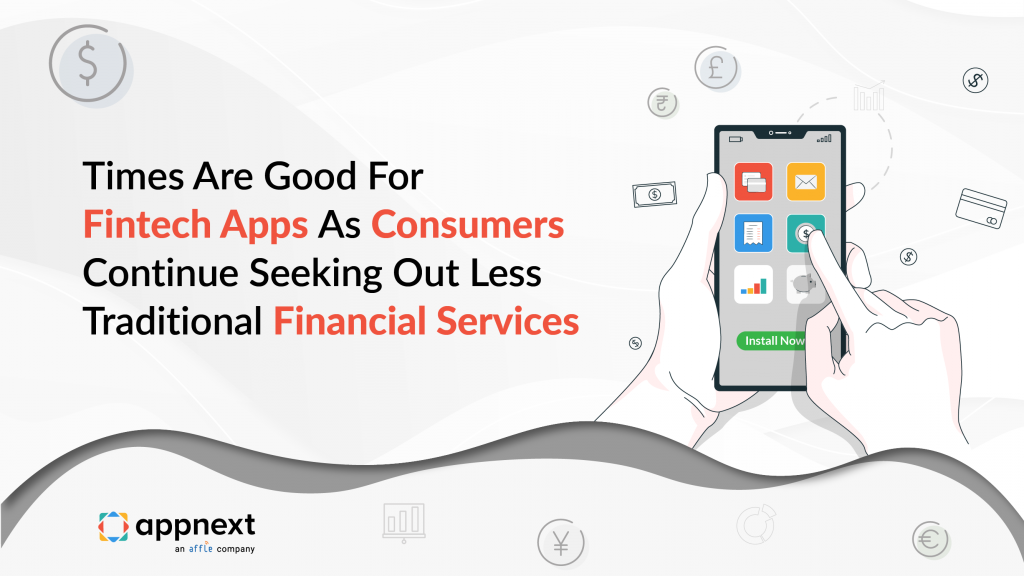Anyone who takes a keen interest in the world of apps can’t fail to have noticed the boom in one particular vertical in recent times: the financial sector.
Yes, the number of financial – or fintech – apps in use around the globe has skyrocketed in the last two-to-three years: at Appnext, 20% of our clients are now fintech apps.
This represents a big shift in the way consumers do their banking and use financial services, and the direction of travel is not expected to change: the global mobile payment market, for instance, is projected to grow from USD 1.97 trillion in 2021 to USD 11.83 trillion in 2028 at a CAGR of 29.1%.
It all started, as with so many changes in the app space, with the pandemic in 2020: as several countries around the world went into lockdown in March 2020, use of fintech apps surged with consumers looking for less physical touchpoints in all aspects of their life.
Since then, many consumers have become used to this more digital way of managing their finances, and more and more apps have been developed to meet the demand.
In 2021, according to the American Banking Association, a whopping 95% of Gen Z smartphone owners in the US used mobile banking, along with 91% of millennials, 85% of Gen X, 60% of baby boomers, and over 50% of seniors.
Data from Sensor Tower shows that worldwide downloads of fintech apps exceeded 6.1 billion in 2021, up 25.2 percent year-over-year.
Fintech apps in Asia saw significant growth after the outbreak of Covid-19, with India and Southeast Asia leading the way.
According to Sensor Tower, in Q1 2022 total downloads in Asia reached 880 million, a 44% increase from pre-pandemic levels in Q4 2019.
Latin America and Europe also saw quarterly downloads increase, with Payment, Crypto, and Banking apps being the main growth drivers.
Data.ai’s State of Mobile 2023 report found that mobile app adoption across top subgenres like Mobile Banking, Digital Wallets & Payment, and Personal Loans all saw rapid growth globally in 2022, while the top four fintech apps worldwide were all within the Digital Wallets & Payment category.
Now, economic concerns such as high inflation and a looming global recession are leading to some interesting changes to fintech app usage.
Personal Loans apps have flourished across North America, Asia, and Africa, while in the US cash advances and early access to paychecks have become an increasingly popular feature across fintech apps.
According to data.ai, US cash advance downloads spiked in 2022, increasing 44% YoY, which aligns with the increased search traffic in the App Store for “cash advance”.
One area that saw a notable downturn in 2022 was cryptocurrency trading apps, which can be attributed to the turbulence in the cryptocurrency market that resulted in the downfalls of cryptocurrencies like Luna and crypto exchanges like FTX.
One common feature of most fintech apps is that they tend to be quite localized, with the majority of a country’s downloads coming from advertisers based in that market.
This isn’t surprising, given the difficulties in understanding and adopting each country’s unique financial rules and regulations.
According to data.ai, the local advantage is strongest in APAC, particularly China, Japan and South Korea: more than 99% of China’s finance downloads in 2022 were from local companies, while in Japan and South Korea the figure was more than 93%.
The local nature of these apps means they are often more than just a mobile banking service, but a social enterprise as well: many are providing services in locations where users had no, or limited, previous access to a bank.
For example, the socially-focused mobile payment platform Netzme has set out to revolutionize mobile finance in Indonesia by targeting unbanked users in rural areas.
Netzme Co-founder and CEO Vicky Saputra says he started the company after the realization that “financial inclusion and financial literacy is quite a big issue [in Indonesia], especially for people in small cities and rural areas”.
He added: “As far as we know, these people are the majority, and we expect to have a really good social impact.”
Similarly, Appnext client Fido is on a mission to empower individuals and entrepreneurs in Ghana by providing financial services that are inclusive, instant, and easily accessible.
Fido’s independent financial platform is able to make instant credit decisions – even for customers with no financial track record – based on unique machine-learning risk models.
In the past year, Appnext’s app discovery technology has helped Fido reach out to many more over-18s in Ghana who are now using the Fido app on a daily basis.
Another Appnext client in the fintech space is Turkey-based Papara, which has also seen its user base increase dramatically through its partnership with Appnext.
Papara aims to offer a modern alternative take on traditional banking, “putting its customers at its heart”.
With the Papara app, customers can send money 24/7 for free, pay bills, and manage their budget, while the Papara Card can be used around the world, earning the user instant cashback as they spend.
Within nine months of partnering with Appnext to help drive traffic to the Papara app, Papara saw its installs increase by 42%, account sign-ups rise by 49%, and its CPA decrease by 26%.
As the fintech app space continues to grow, Appnext is poised to help more smartphone users around the world discover, and benefit from, those new mobile financial services.




Comments are closed.